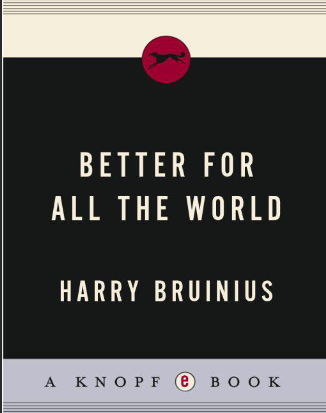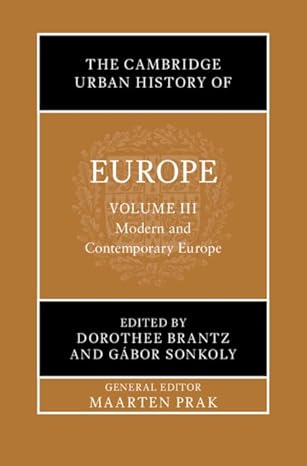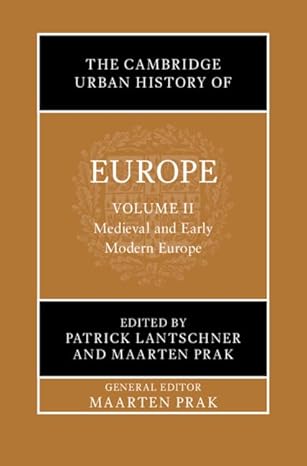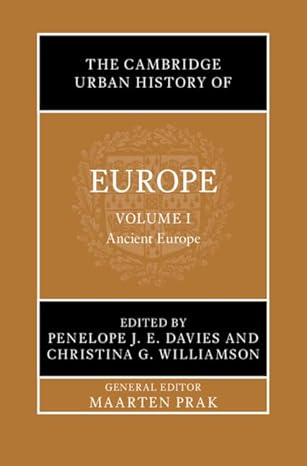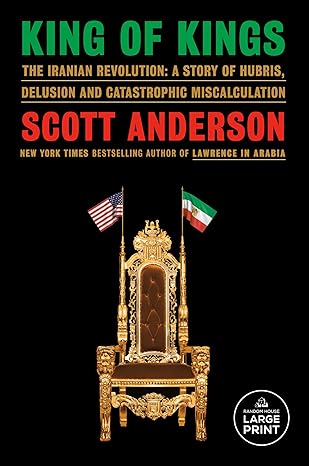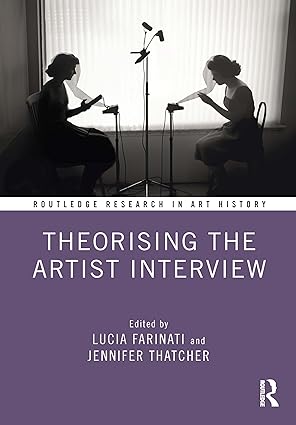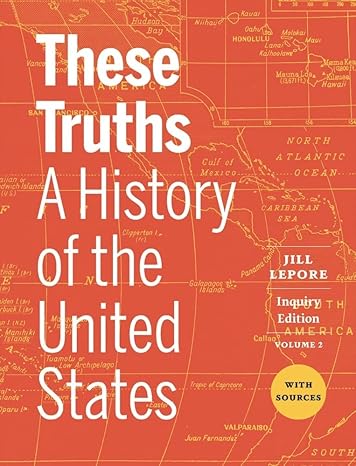called eugenics. The quest for the Good is at the heart of this science—it is the root of the term, after all, derived from the Greek eugenes, meaning “wellborn” or, in effect, “good genes.” It was coined in the late nineteenth century by the father of this science, Francis Galton, a wellborn Victorian genius and member of one of the most illustrious scientific families of his day. After his cousin Charles Darwin shook the world with his theory of evolution, proclaiming revolutionary new ideas about the origin and development of living species, Galton began to reflect on the biological differences that made one person a genius and another a dolt. But his own theory soon went beyond studying the origins of intelligence to considering the nature of the Good. Like those who breed good cattle or good peas, he wondered whether human beings could likewise breed themselves and produce a glorious race of biologically superior men and women. Within any epic story is the specter of the gods, and the Christian God pervades eugenics from the start. On the Origin of Species had profound theological implications about human identity and sparked a vociferous response from clergy and scientists both. Darwin’s theory, published in 1859, presented in methodic detail the natural, violent forces that shaped the human body—not from the dust of the ground, but from slowly evolving lower forms of life. Man was not “fallen” from a higher state, created perfect through the breath of God, then cast from Paradise because of sin. He was actually rising up from a lowly state, moving toward perfection with the crawl of time. The great tropes of origin and development in the nineteenth century—Darwin’s “natural selection,” Herbert Spencer’s “survival of the fittest,” and Galton’s “nature versus nurture”—shattered the foundations of human identity, the idea that human nature was immutable and akin to the divine. Salvation could now be a scientific enterprise. But out of these ruins came an agonizing question. If these new discoveries were true, and people developed no differently than the beasts of the field, then what of human dignity? What happened to dignity when human beings were not created in the imago dei, the image of God, but arose instead from Eoanthropus dawsoni or other apelike species? What would happen to the Enlightenment’s theory of “natural rights” which were said to be endowed by a creating deity? Science since the Enlightenment had already begun to shake off the unexamined authorities of religion and tradition, replacing them with a process of inquiry and doubt. Yet most thinkers still held to this special place of Man in a divinely created order, a species set apart from the animals. Cartesian doubt reduced all to a disembodied thinking thing and founded knowledge upon the being of the human mind—which was, again, akin to the divine. So when the new “naturalists” studied human beings empirically, just as any other animal, just as an organism of heaving blood and twitching nerves, they seemed to shatter a millennia- long consensus of human uniqueness, even from a humanistic point of view. Only now could Galton take the dramatic step and consider applying the long-established techniques of agricultural breeding to the human species. Like the evolution of any idea, that of eugenics is complex. As it arose out of the many anxieties caused by the sweeping revolutions of the nineteenth century, it developed into a diverse movement, utilized by people with varying beliefs and motives. But better breeding must assume a better breed, and the “survival of the fittest”— believed to be the brutal and fundamental law of Nature— must assume the presence of the “unfit.” Many thinkers began to see the world’s interwoven social groups pitted against each other in a great struggle. Whether this was the smart and the dull, the proletariat and the bourgeoisie, or the Aryan and the Jew, by the end of the century the idea began to inform a host of new theories of social life. Natural science allowed many to redefine old, clannish myths of superior ancestry—myths earlier just pride in past accomplishments supported by some god—and change them into the corporeal, biological facts of evolution. Demythologized, the “unfit” were now determined by their genes. Like a leitmotif in an opera of evolutionary survival, the resounding theme of eugenics became the drone of statistics. Trumpeted in scientific journals and popular periodicals, the growing numbers of paupers and criminals were said to pose a grave danger within society, and the oncoming tide of unfit foreign races, the genetically inferior “semi-barbaric hordes,” were said to threaten the gates of civilization itself. As students of evolution, eugenicists believed the human race must begin to take control of human reproduction and ethnic intermingling. With the rational and objective methods of science, they hoped to breed only the biologically best of the races, and prevent the propagation of the worst. The “mawkish sentiments” and “flimsy shibboleths” of the past, especially those of unenlightened religious authorities, should give way to incontrovertible statistics and scientifically proven theorems, which could sweep away any discomfort methods like sterilization might cause. Goodness and dignity, like the species itself, were neither static nor inherently fixed: they were developing and coming to be. Like cattle and peas, some were better than others, with a greater claim to dignity. Like pigs and flowers, humans could be judged for fitness at the county fair. Like the weaklings of the flock, some should just be made to perish. And so they were. THIS IS A STORY in many ways uniquely American. Purity and innocence have long been great motifs of American life, and may explain in part why this country, more than any other, first grasped Galton’s science and became the pioneer in marriage restriction, forced sterilization, and other methods of eugenic engineering. Since the time of the Puritans, a subtle and pervasive self-understanding has shaped the belief that Americans are a “peculiar people,” chosen by God to come to this land of Edenic lushness, where material abundance, good health, and moral purity can reign free. Americans have often defined their civic and spiritual lives through this biblical image, and have remained relentlessly optimistic, ever confident that the burdens of history and the evils of the past can be swallowed up in this New Jerusalem, this paradise regained in America. But this self-understanding has always carried with it a “sweeping prophecy of doom.”2 The consequences of impurity and disobedience could shatter the foundations of this paradise regained, turning its promise into a curse. On the ship Arbella, somewhere in the Atlantic Ocean in 1630, the Puritan minister John Winthrop preached a sermon entitled “A Model of Christian Charity” to a group of shivering families heading out to an unknown world. It was a message of hope and desire, words of promise outlining the settlers’ understanding of the epic task before them. This sermon would become a kind of myth, a founding document for the civilization to come, proclaiming America as the new Israel, the radiant, innocent bride entering into a marriage covenant with her God, and bound to keep His precepts. But if she failed, she would be consumed: We shall find that the God of Israel is among us, when ten of us shall be able to resist a thousand of our enemies; when He shall make us a praise and glory that men shall say of succeeding plantations, “the Lord make it like that of New England.” For we must consider that we shall be as a city upon a hill. The eyes of all people are upon us, so that if we shall deal falsely with our God in this work we have undertaken, and so cause Him to withdraw His present help from us, we shall be made a story and a by-word through the world. We shall open the mouths of enemies to speak evil of the ways of God, and all professors for God’s sake. We shall be consumed out of the good land whither we are agoing. Celebrated and critiqued in later American literature, this myth of innocence and purity, this image of a peculiar people called to traverse a spiritual wilderness and conquer a new Promised Land, evolved over the years from Puritan social utopianism to the inner, transcendent solitude of the soul. The purified individual—expressed in the revival-ism of the Great Awakening, the individualism of pioneers pressing west, as well as the Transcendentalism of nineteenth- century New England—could transform the American landscape and continue to make this land as a city upon a hill. The image would be cited by politicians and reformers well into the twentieth century, and would contribute to a relentless American drive for technological innovation as well as self-improvement.
چکیده فارسی
به نام اصلاح نژاد. جستوجو برای خیر در قلب این علم قرار دارد - به هر حال ریشه این اصطلاح از واژه یونانی eugenes گرفته شده است که به معنای «به دنیا آمدن» یا در واقع «ژنهای خوب» است. در اواخر قرن نوزدهم توسط پدر این علم، فرانسیس گالتون، نابغه ویکتوریا و عضو یکی از برجسته ترین خانواده های علمی عصر خود، ابداع شد. پس از اینکه پسر عمویش چارلز داروین جهان را با تئوری تکامل خود تکان داد و ایده های انقلابی جدیدی را در مورد منشاء و توسعه گونه های زنده اعلان کرد، گالتون شروع به تفکر در مورد تفاوت های بیولوژیکی کرد که یک نفر را نابغه و دیگری را به یک دال تبدیل می کرد. اما نظریه خود او به زودی فراتر از مطالعه منشأ هوش و در نظر گرفتن ماهیت خیر رفت. مانند کسانی که گاوهای خوب یا نخودهای خوب پرورش می دهند، او به این فکر می کرد که آیا انسان ها نیز می توانند خود را پرورش دهند و نژادی باشکوه از مردان و زنان برتر از نظر بیولوژیکی تولید کنند. در هر داستان حماسی، شبح خدایان وجود دارد، و خدای مسیحی از همان ابتدا بر اصلاح نژادی نفوذ می کند. در مورد منشاء گونه ها پیامدهای الهیاتی عمیقی در مورد هویت انسانی داشت و باعث واکنش پر سر و صدای روحانیون و دانشمندان هر دو شد. تئوری داروین که در سال 1859 منتشر شد، نیروهای طبیعی و خشونت آمیزی را که بدن انسان را شکل داده اند - نه از گرد و غبار زمین، بلکه از اشکال پایین تر زندگی که به آرامی در حال تکامل هستند، با جزئیات روشمند ارائه می کند. انسان از حالتی بالاتر «افتاده» نشده، از طریق نفس خداوند کامل آفریده شده، سپس به دلیل گناه از بهشت اخراج نشده است. او در واقع از حالت پستی بلند می شد و با خزیدن زمان به سوی کمال می رفت. استعاره های بزرگ منشأ و توسعه در قرن نوزدهم - «انتخاب طبیعی داروین»، «بقای بهترین ها» هربرت اسپنسر، و «طبیعت در مقابل پرورش» گالتون- پایه های هویت انسانی، این ایده که طبیعت انسان تغییر ناپذیر است را در هم شکست. شبیه به الهی نجات اکنون می تواند یک کار علمی باشد. اما از میان این ویرانه ها یک سوال دردناک به وجود آمد. اگر این اکتشافات جدید درست بود، و مردم به گونه ای متفاوت از جانوران میدان رشد نکردند، پس کرامت انسانی چطور؟ وقتی انسان ها در imago dei، تصویر خدا آفریده نشدند، بلکه در عوض از Eoanthropus dawsoni یا دیگر گونه های میمون شبیه به وجود آمدند، کرامت چه شد؟ چه اتفاقی برای نظریه روشنگری درباره «حقوق طبیعی» میافتد که گفته میشد خدایی آفریننده آن را اعطا کرده است؟ علم از زمان روشنگری قبلاً شروع به تکان دادن مقامات بررسی نشده دین و سنت کرده بود و فرآیند تحقیق و تردید را جایگزین آنها کرد. با این حال، بیشتر متفکران همچنان به این جایگاه ویژه انسان در نظمی که خداوند آفریده شده است، گونه ای جدا از حیوانات است. شک دکارتی همه چیز را به یک تفکر بیجسم تقلیل داد و معرفت را بر وجود ذهن انسان بنا نهاد - که باز هم شبیه به امر الهی بود. بنابراین، وقتی «طبیعتگرایان» جدید، انسانها را بهطور تجربی، درست مانند هر حیوان دیگری، بهعنوان ارگانیسمی از خونهای تند و تکاندهنده اعصاب، مورد مطالعه قرار دادند، به نظر میرسید که اجماع هزاران ساله منحصربهفرد بودن انسان را، حتی از دیدگاه انسانگرایانه، در هم شکستند. گالتون تنها در حال حاضر توانست گامی چشمگیر بردارد و تکنیک های قدیمی پرورش کشاورزی را برای گونه های انسانی به کار گیرد. مانند تکامل هر ایده، اصلاح نژادی نیز پیچیده است. همانطور که از دل نگرانی های بسیاری ناشی از انقلاب های گسترده قرن نوزدهم به وجود آمد، به جنبشی متنوع تبدیل شد که توسط افرادی با عقاید و انگیزه های مختلف مورد استفاده قرار گرفت. اما پرورش بهتر باید نژاد بهتری را فرض کند، و «بقای شایستهترین» - که قانون اساسی و بی رحمانه طبیعت است - باید حضور «ناشایست» را فرض کند. بسیاری از متفکران شروع به دیدن گروه های اجتماعی در هم تنیده جهان در یک مبارزه بزرگ در برابر یکدیگر کردند. خواه این افراد باهوش و کسل کننده باشند، پرولتاریا و بورژوازی، یا آریایی و یهودی، در پایان قرن این ایده شروع به ارائه انبوهی از نظریه های جدید در مورد زندگی اجتماعی کرد. علوم طبیعی به بسیاری اجازه داد تا اسطوره های قدیمی و قبیله ای تبار برتر را بازتعریف کنند - اسطوره هایی که قبلاً فقط به دستاوردهای گذشته که توسط خدایی حمایت می شد افتخار می کردند - و آنها را به واقعیت های جسمانی و بیولوژیکی تکامل تبدیل کردند. اسطوره زدایی شده، "ناشایست" اکنون توسط ژن های آنها تعیین می شود. مثل یک لایت موتیف در اپرای بقای تکاملی، موضوع پرطنین اصلاح نژادی به پهپاد آمار تبدیل شد. گفته میشود که تعداد فزاینده فقرا و جنایتکاران که در مجلات علمی و نشریات مشهور بوق میزنند، خطری بزرگ در جامعه به شمار میروند، و گفته میشود که موج نژادهای خارجی نامناسب، «انبوههای نیمه بربر» که از نظر ژنتیکی پستتر هستند، دروازهها را تهدید میکنند. از خود تمدن به عنوان دانش آموزان تکامل، اصلاح طلبان معتقد بودند که نژاد بشر باید کنترل تولید مثل انسان و آمیختگی قومی را به دست بگیرد. آنها با روشهای عقلانی و عینی علم امیدوار بودند که فقط بهترین نژادها را از نظر زیستی پرورش دهند و از انتشار بدترین آنها جلوگیری کنند. «احساسات کثیف» و «شبههای سست» گذشته، بهویژه آن دسته از مقامات مذهبی بیروشن، باید جای خود را به آمارهای غیرقابل انکار و قضایای علمی اثباتشده بدهد، که میتواند هر روش ناراحتی مانند عقیمسازی را از بین ببرد. نیکی و کرامت، مانند خود گونه، نه ثابت بود و نه ذاتاً ثابت: آنها در حال توسعه بودند و به وجود می آمدند. مانند گاو و نخود، برخی از آنها بهتر از دیگران بودند و ادعای کرامت بیشتری داشتند. مانند خوک ها و گل ها، انسان ها را می توان از نظر تناسب اندام در نمایشگاه شهرستان مورد قضاوت قرار داد. مانند ضعيفان گله، عدهاي را بايد به هلاكت رساند. و همینطور بودند. این یک داستان از بسیاری جهات منحصر به فرد آمریکایی است. خلوص و بیگناهی از دیرباز موتیفهای بزرگ زندگی آمریکایی بودهاند و شاید تا حدی توضیح دهد که چرا این کشور، بیش از هر کشور دیگری، برای اولین بار علم گالتون را درک کرد و در محدودیت ازدواج، عقیمسازی اجباری و دیگر روشهای مهندسی اصلاح نژاد پیشگام شد. از زمان پیوریتنها، خودفهمی ظریف و فراگیر این باور را شکل داده است که آمریکاییها «مردم عجیبی» هستند که از سوی خدا انتخاب شدهاند تا به این سرزمین سرسبز عدن بیایند، جایی که فراوانی مادی، سلامتی خوب و پاکی اخلاقی میتواند. سلطنت آزاد آمریکایی ها اغلب زندگی مدنی و معنوی خود را از طریق این تصویر کتاب مقدس تعریف کرده اند، و بی وقفه خوش بین بوده اند، و همیشه مطمئن بوده اند که بارهای تاریخ و بدی های گذشته را می توان در این اورشلیم جدید بلعید، این بهشت دوباره در آمریکا به دست آورد. اما این خودفهمی همیشه با خود یک «پیشگویی فراگیر عذاب» را به همراه داشته است. پیامدهای ناپاکی و نافرمانی میتواند پایههای این بهشت را که دوباره به دست میآید در هم بشکند و وعده آن را به نفرین تبدیل کند. در کشتی Arbella، جایی در اقیانوس اطلس در سال 1630، وزیر پیوریتن جان وینتروپ خطبه ای با عنوان "الگویی از خیریه مسیحی" برای گروهی از خانواده های لرزان که به سوی دنیایی ناشناخته حرکت می کردند موعظه کرد. این پیامی از امید و آرزو بود، سخنان وعدهدهندهای که درک شهرکنشینان از وظیفه حماسی پیش رویشان را مشخص میکرد. این موعظه به نوعی اسطوره تبدیل میشود، سندی برای تمدن آینده که آمریکا را به عنوان اسرائیل جدید، عروس درخشان و بیگناهی که با خدای خود عهد ازدواج میبندد و موظف به حفظ احکام او است، اعلام میکند. اما اگر او شکست بخورد، هلاک خواهد شد. ما خواهیم دید که خدای اسرائیل در میان ما است، وقتی ده نفر از ما قادر به مقاومت در برابر هزار نفر از دشمنان خود باشیم. هنگامی که او ما را ستایش و جلال خواهد کرد که مردم درباره مزارع بعدی بگویند، "خداوند آن را مانند نیوانگلند بساز." زیرا ما باید در نظر بگیریم که مانند شهری روی تپه خواهیم بود. چشم همه مردم به سوی ما است تا اگر در این کاری که انجام دادهایم با خدای خود به دروغ رفتار کنیم و او را وادار کنیم که یاری کنونی خود را از ما سلب کند، ما را به داستان و داستان تبدیل میکنند. جهان. دهان دشمنان را به بدگویی از راه خدا و همه اساتید به خاطر خدا باز خواهیم کرد. ما از سرزمین نیکویی که در آن پیش می رویم، نابود خواهیم شد. این اسطوره معصومیت و پاکی که در ادبیات متأخر آمریکایی مورد تجلیل و نقد قرار گرفت، این تصویر از مردمی عجیب و غریب که برای عبور از یک بیابان معنوی و فتح سرزمین موعود جدید فراخوانده شدهاند، در طی سالها از آرمانشهری اجتماعی پیوریتن به خلوت درونی و متعالی جهان تکامل یافته است. روح فرد پاک شده - که در احیای بیداری بزرگ، فردگرایی پیشگامانی که به غرب فشار میآورند، و همچنین استعلاییگرایی قرن نوزدهم نیوانگلند بیان شده است - میتواند چشمانداز آمریکا را دگرگون کند و همچنان این سرزمین را به عنوان یک شهر تبدیل کند. تپه این تصویر تا قرن بیستم توسط سیاستمداران و اصلاحطلبان مورد استناد قرار میگرفت و به انگیزه بیوقفه آمریکا برای نوآوریهای تکنولوژیکی و همچنین خودسازی کمک میکرد.
ادامه ...
بستن ...
